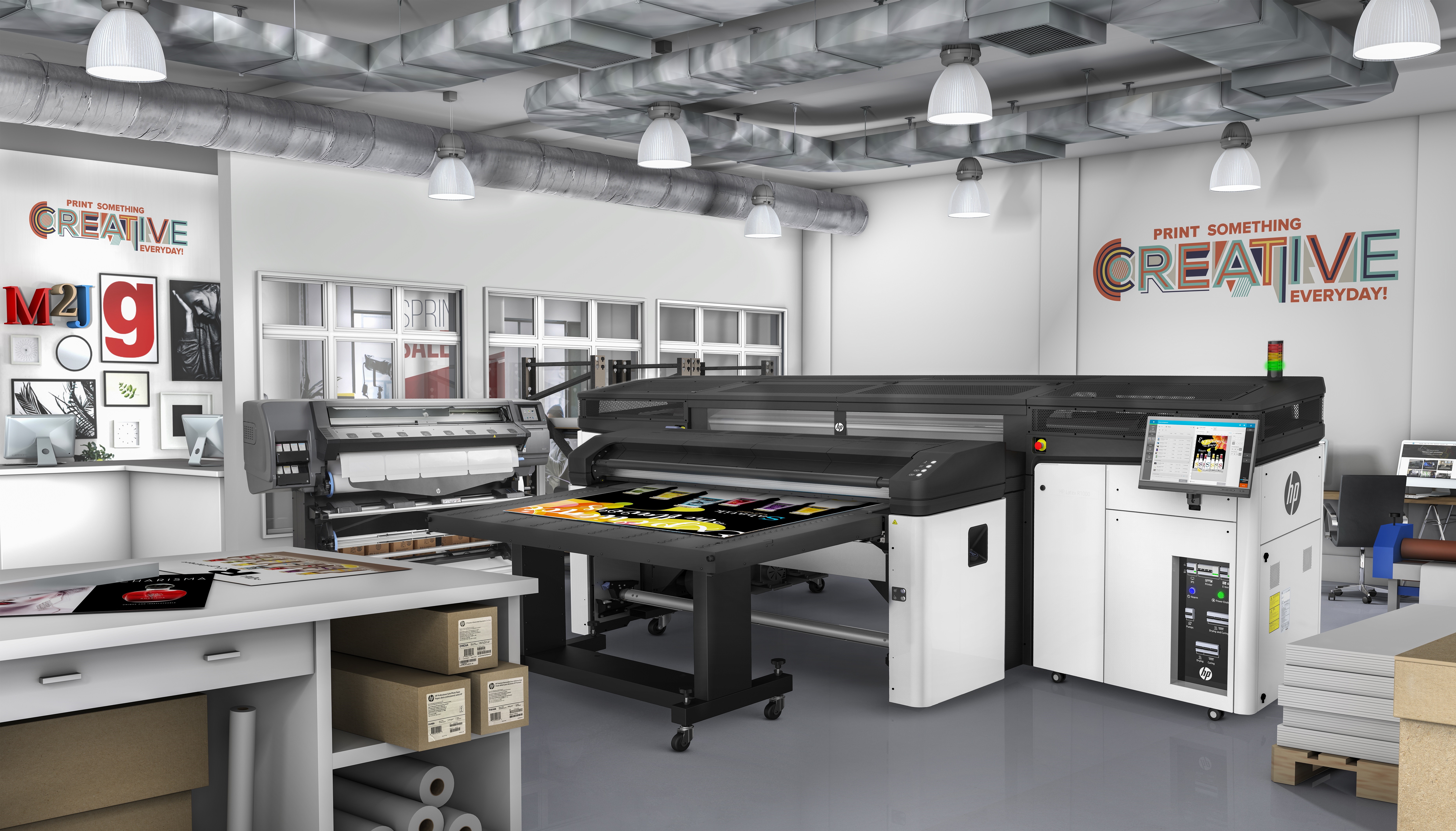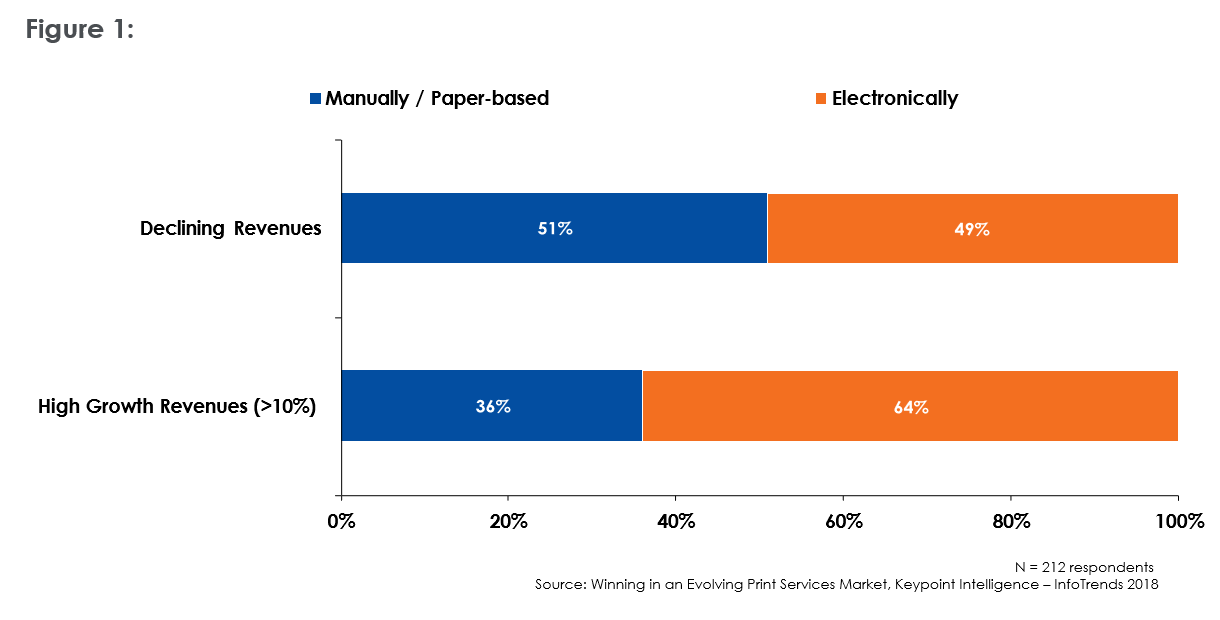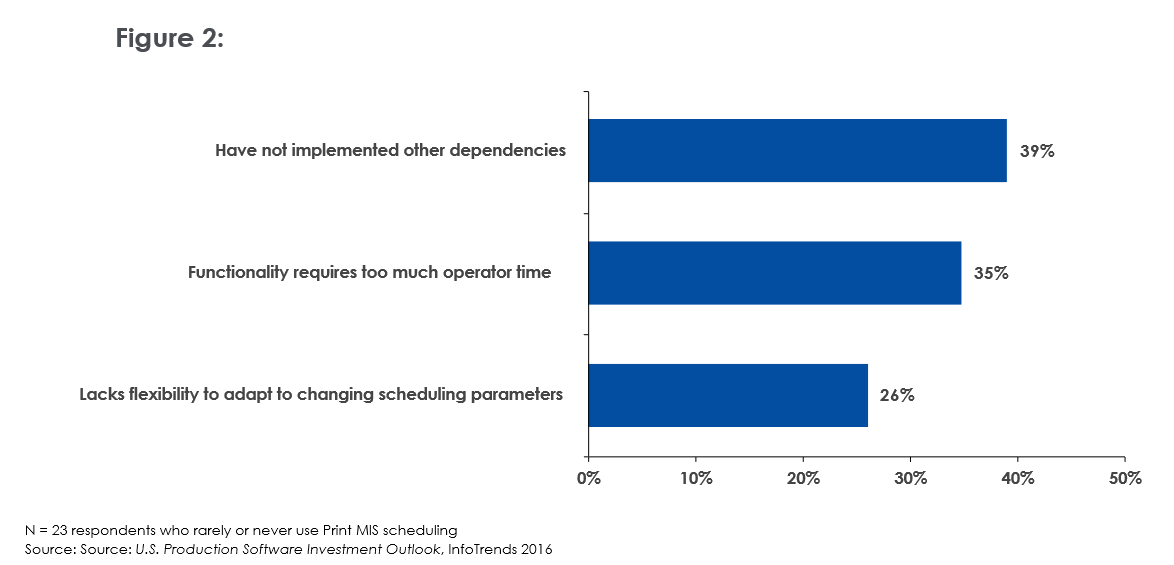
Welcome to this HP Site Flow whitepaper on print production scheduling. This is part of a series of whitepapers commissioned by HP in 2020 and provides a thorough independent analysis of current workflow trends and the benefits that it can bring across verticals. From capturing digital labels and packaging through short-runs and mass customisation to scaling to thousands of orders without falling apart, this series is designed to help any print service provider get the full picture. The whitepapers can be read in full on this site or downloaded instantly as a PDF with no pesky forms to fill out. From all of us in the HP Site Flow team, we hope you find the series useful.
Keypoint Intelligence White Paper: MASTER CAPACITY WITHOUT THE CHAOS USING DYNAMIC SCHEDULING
Introduction
Too much time is spent inside of print shops trying to wrangle the production schedule to fit the shop’s capacity while meeting customer due dates or service level agreements (SLAs). There are daily production meetings that are an orchestrated dance of give-and-take to ensure all departments are aware of any delays and bottlenecks that may impact delivery. There are typically one or more full-time employees responsible for updating customised job tracking spreadsheets and (in many cases) also updating the same information on a physical job board system. Ultimately, all this negotiated and manual updating of critical production information flows down to the operator, who then performs the tasks. All these processes are highly inefficient, a waste of valuable production time, and increase the likelihood errors.
It’s 2020—there are better ways to manage an ever-changing print production schedule. There is software that can automate the initial planning for print production whether the demand is for fewer than a hundred, or for thousands or more orders produced per day. In fact, research by Keypoint Intelligence found that companies with annual revenue growth above 10% were more likely to use electronic scheduling. Growth print service providers (PSPs) averaged $27 million in revenue versus $7 million for those in decline. Simply put, manual scheduling breaks down when dealing with hundreds of orders per day.
High Growth Companies Schedule Electronically

An initial schedule, however, only works when all variables are constant and predictable, which are non-existent in printing environments. Any electronic scheduling system must be adaptive to real-time changes occurring in real-time from the production floor and enable users to make last-minute, late-stage changes. Typical changes may include moving a job from one press to another, which requires re-scheduling and a new imposition to accommodate the format change. Other last-minute changes can occur when work takes longer than initially planned, affecting all remaining work-in-progress jobs that have their own individual due dates. These types of changes are time consuming to fix through manual scheduling methods, but are streamlined when using software-based scheduling.
Is the chaos caused by your current scheduling costing you up to 20 million in revenue?
The Dynamic Scheduling feature in HP Site Flow, an end-to-end workflow automation and production management solution, is built to solve the scheduling challenges of today’s print shops that must produce hundreds or thousands of jobs efficiently while meeting critical customer due dates/SLAs. The solution automates the initial planning of work based on due dates/SLAs, receives updates as work progresses through the shop, and allows operators to make late-stage changes as the need arises.
Old School Capacity Planning is Broken
Scheduling is complex since print production is small-batch manufacturing with lots of variables and interdependencies in the production process that may be unique from job- to-job. The traditional method used by print MIS solutions has been based on capacity planning, where times are calculated for the primary production tasks and then assigned to the first available production time. Scheduling by capacity often ignores other realities (such as SLAs) and optimisation possibilities from batching and smart impositions.
The mechanics of capacity planning, often using a Gantt chart to visually manipulate the schedule, worked in the days of few jobs and high run lengths printed with analogue equipment. Today’s printers, immersed in digital printing technology, are reporting daily order volumes anywhere from 82 to more than 249 jobs. Scheduling this number of short- run jobs is impractical (if not impossible) based on traditional methods, and would require at least one full-time employee or more to just manage the production schedule. Modern scheduling needs to make the complex simple through automation and intelligence.
Electronic scheduling can be a powerful ally for quick turnaround, high order volume print shops. Yet, many printers have chosen to stay with manual schedule boards or customised spreadsheets due to the cost, complexity, or burden to users.
Factors Limiting Use of Print MIS Scheduling

The number one reason why printers do not use their print MIS-based scheduling system is from a lack of implementing other dependencies—most commonly shop floor data collection. Effective print production scheduling requires feedback directly from the shop floor to capture the time in and out for each scheduled task. This critical feedback loop updates the status of jobs and tracks differences in planned versus actual time in production to dynamically adjust the schedule. Most print MIS solutions have this as a separate module that requires extra professional services to implement, thereby increasing the cost.
Shop floor data collection can also place extra burden on equipment operators if data collection is not automated through barcodes or gathered directly from the equipment. Operators need to focus on running the equipment to maximise uptime and throughput.
Scheduling for Today’s Print Production Challenges
HP Site Flow takes a different approach to job scheduling. HP Site Flow is an end-to-end production platform that is aware of capabilities of the print shop, in effect creating a digital twin or version of the physical plant. Once combined with the production specifications, each job is broken into individual, timed tasks that must be completed in order to meet the due date or SLA. When changes happen in production, users can quickly make late-stage changes (such as moving work from one press to another).
Similarly, when tasks are delayed or overdue, operators can quickly re-optimise the entire production schedule in a few clicks.
HP Site Flow uses business rules to optimise production by combining jobs using batching and smart imposition techniques. Consolidating jobs upfront minimises the total job count prior to scheduling where HP Site Flow automatically creates an initial production plan, respecting each job’s due date or SLA.
Scheduling Steps for Modern Shops

Operators receive up-to-date work lists, typically viewed on a digital device like a tablet, to know what jobs to produce in the best order. Tracking the times and job status is simple for operators who only need to scan a barcode that HP Site Flow adds to each job, and where all the critical job information is stored. After the task is completed and barcode scanned, the schedule and operator’s work list are automatically updated.
When production challenges happen, HP Site Flow offers several ways to get back on track. The schedule can be recalculated with a few clicks to meet SLAs based on the updated status of all work-in-progress jobs. The system also provides visual cues for job exceptions where the work is at risk of not being completed on time, letting the operator choose the best path forward. If equipment needs maintenance or goes down unexpectedly, HP Site Flow can also shift work to available equipment with a few clicks. For these late-stage changes, the built-in automation and intelligence create new job batches and impositions required for the new press.
Dynamic Scheduling Controls the Chaos
The production chaos is real and painfully visible for print shops that have yet to take control of their scheduling. The sales staff constantly inquire about the status of their customer’s orders—largely due to uncertainty—and try to exert changes to the production schedule. Customer support representatives remain in a state of heightened anxiety as they try to locate the whereabouts of job after job. Production managers and coordinators run laps around the print shop floor to physically track jobs and “put out fires.”
The processes and procedures that worked well for analogue production are at their breaking point. There are simply too many orders to manage, too many types of applications and print technologies, and too tight turnaround times to use the same tools and solutions as year’s past. Dynamic Scheduling in HP Site Flow confronts today’s print production scheduling needs with automation and intelligence, but with enough flexibility to resolve challenges due to the unpredictability of print production. It is time to take back control, eliminate the chaos, and implement a modern solution to manage your print operation.



